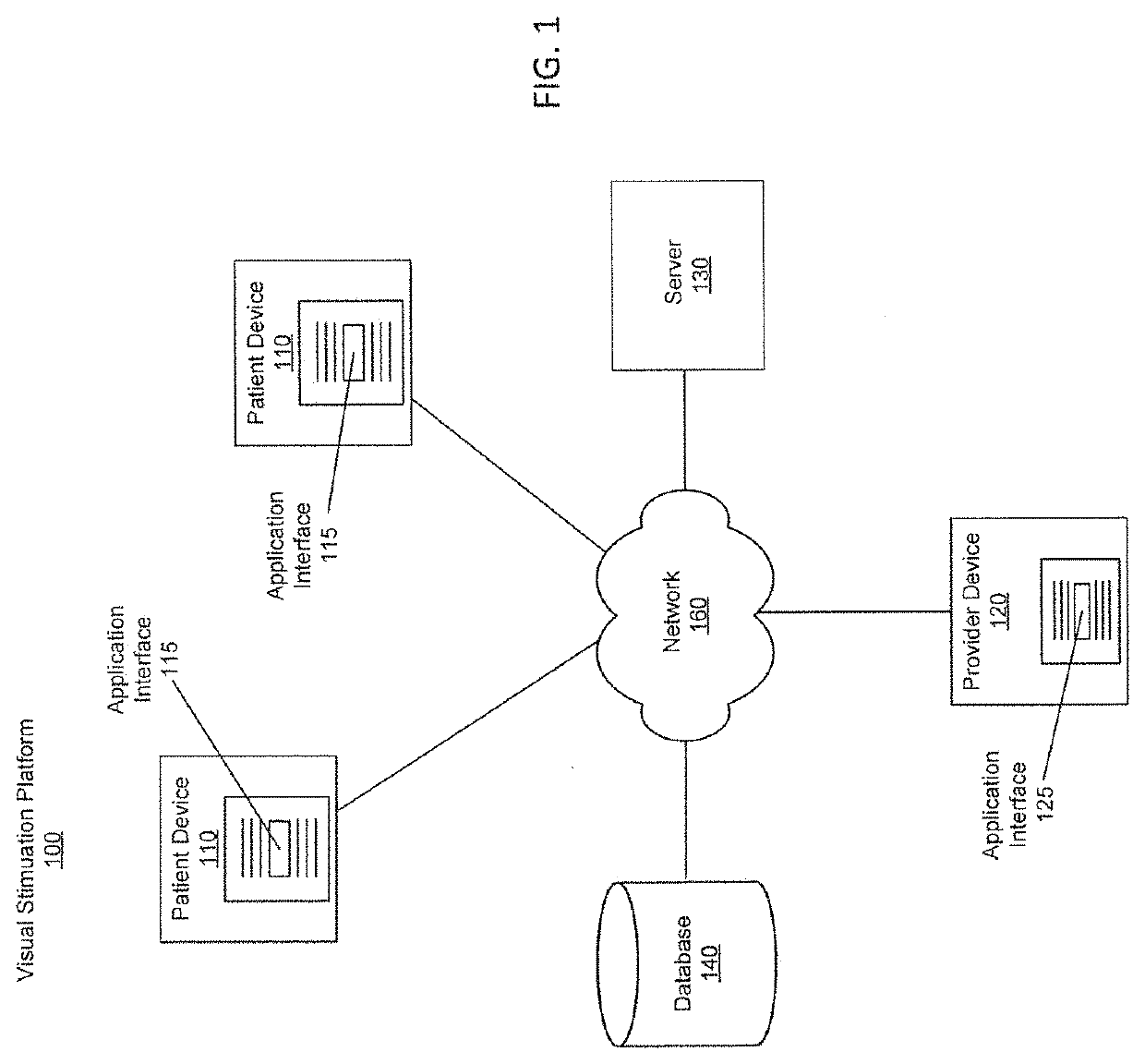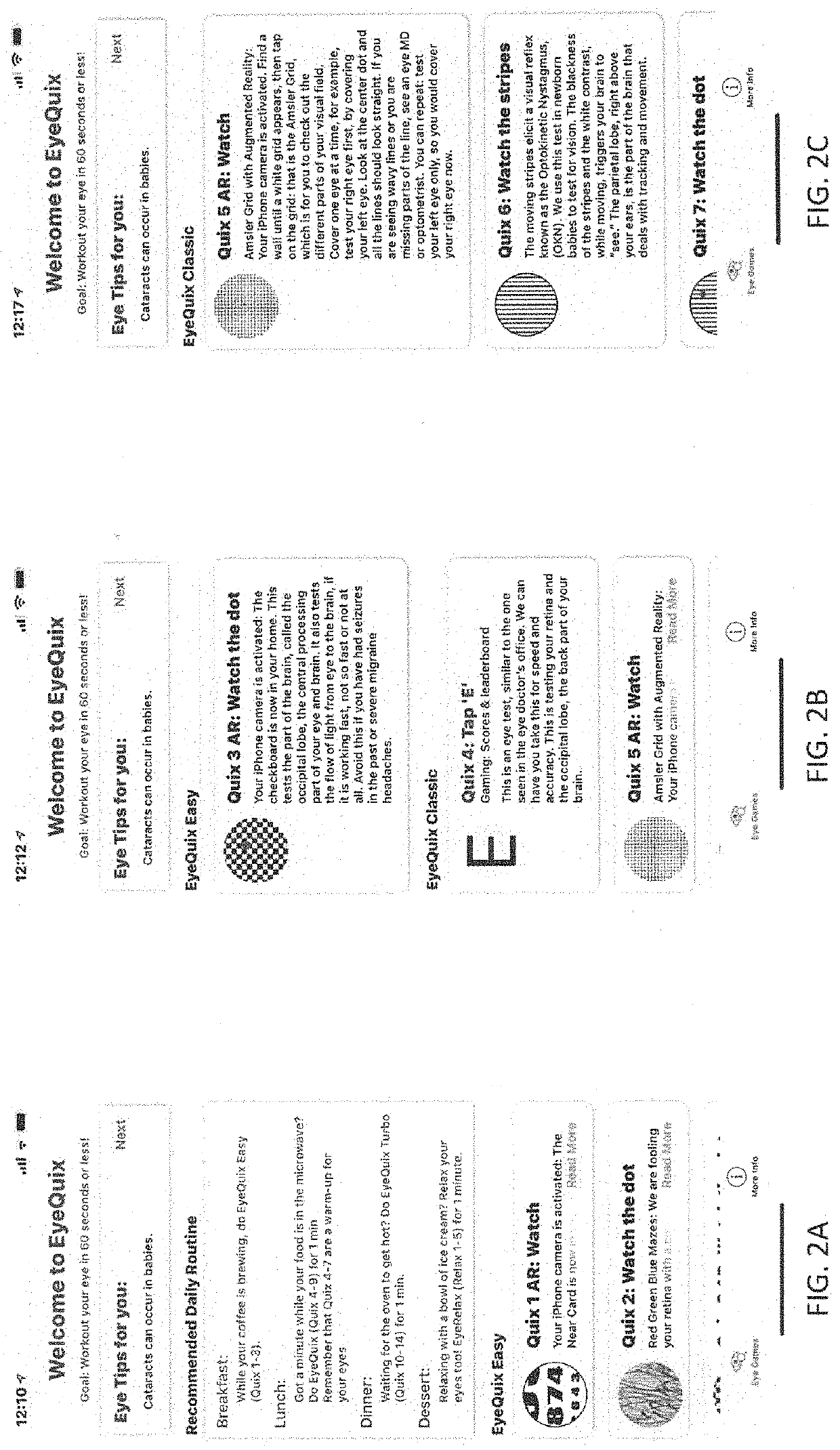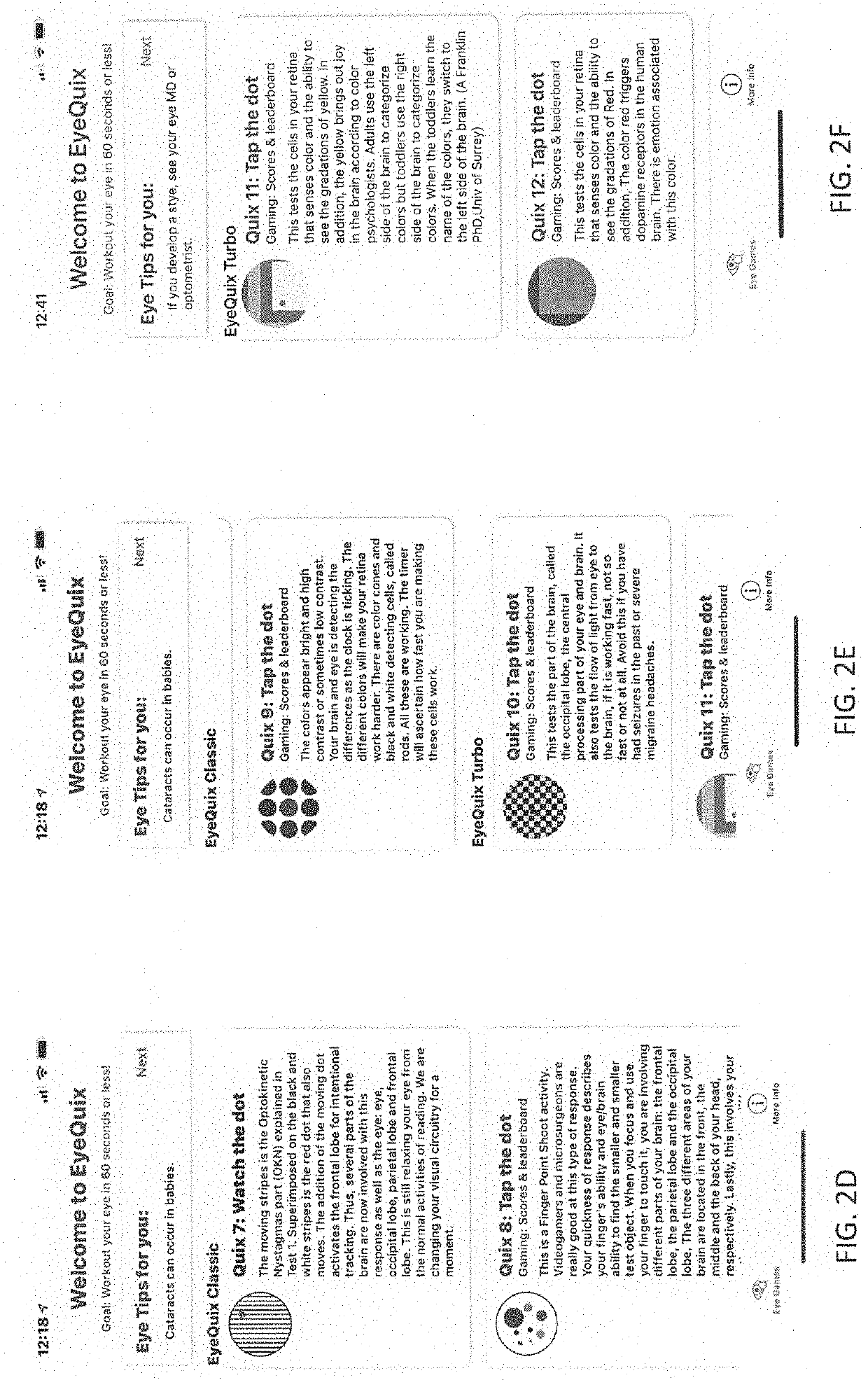Stimulation of brain pathways and retinal cells for vision training
a brain pathway and retinal cell technology, applied in the field of vision training and enhancement, can solve the problems of lack of conventional treatments for all of these vision restorations, limited treatment ability of conventional patching practice, and cumbersome patching practice, so as to reduce activity, increase eye function, and improve vision loss
- Summary
- Abstract
- Description
- Claims
- Application Information
AI Technical Summary
Benefits of technology
Problems solved by technology
Method used
Image
Examples
Embodiment Construction
I. System Overview
[0026]FIG. 1 is a diagram of a computing environment for a visual stimulation platform 100 according to one embodiment. The computing environment includes the server 130, one or more patient (client) devices 110, one or more providers 120, and a database 140, each connected to a network 160. Some embodiments of the computing environment may have additional, fewer, or different components than the ones described herein. For example, the patient devices 110 can represent thousands or millions of devices for patients (e.g., patient mobile devices) that interact with the platform in locations around the world. Similarly, the provider device 120 can represent thousands or millions of devices of health providers (e.g., mobile phones, laptop computers, in-provider-office recording devices, etc.). In some cases, a single provider may have more than one device that interacts with the platform 130. The functions can be distributed among the components in a different manner t...
PUM
 Login to View More
Login to View More Abstract
Description
Claims
Application Information
 Login to View More
Login to View More - R&D
- Intellectual Property
- Life Sciences
- Materials
- Tech Scout
- Unparalleled Data Quality
- Higher Quality Content
- 60% Fewer Hallucinations
Browse by: Latest US Patents, China's latest patents, Technical Efficacy Thesaurus, Application Domain, Technology Topic, Popular Technical Reports.
© 2025 PatSnap. All rights reserved.Legal|Privacy policy|Modern Slavery Act Transparency Statement|Sitemap|About US| Contact US: help@patsnap.com



